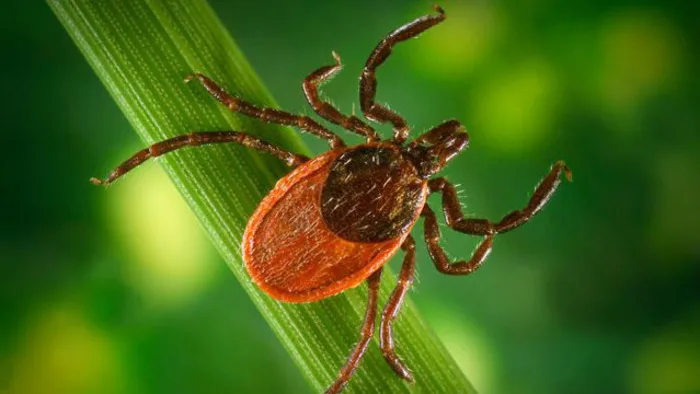
MACOMB COUNTY, Mich. – Health officials across Michigan are raising alarms about a significant surge in black-legged ticks, which carry Lyme disease and other tick-borne illnesses.
The Michigan Department of Health and Human Services reports a 168% increase in Lyme disease cases statewide over the last five years, with 1,215 cases in 2024 compared to 452 in 2020.
Wayne County has seen a 65 percent rise in Lyme disease cases so far in 2025 compared to 2020, according to Avani Sheth, MD, MPH, chief medical officer at Wayne County Department of Health, Human & Veterans Services.
The department conducts annual tick surveillance in local parks and outdoor areas to monitor tick populations and test for pathogens.
Joe Decaussin, an environmentalist with the Macomb County Health Department, explained that black-legged ticks have become established in northern Macomb County over the past few years. He uses a method called a “tick drag,” where a cloth is dragged across wooded areas to collect ticks for identification and testing.
Decaussin said the monitoring program, which began in 2019, has found positive results for the bacteria that causes Lyme disease in tick samples from 2021 through 2023.
In 2024, tests came back negative, but tick collection continues this year.
The black-legged ticks are small—nymphs are about the size of a poppy seed—and can be difficult to spot. Decaussin emphasized the importance of taking precautions when spending time outdoors, especially in wooded areas with leaf litter, which provide ideal tick habitats.
Residents are advised to use EPA-registered insect repellents on skin and clothing, stay on clear trails, avoid tall grass and brush, wear long sleeves and pants, and check themselves, children, and pets for ticks after outdoor activities. Showering soon after coming indoors and promptly removing any attached ticks with fine-tipped tweezers are also recommended.
Michigan has also seen a nearly fivefold increase in anaplasmosis cases, another tick-borne disease, with 82 cases reported in 2024 compared to 17 in 2020.
Decaussin noted that ticks typically need to be attached for 24 to 48 hours to transmit Lyme disease. If flu-like symptoms or a bull’s-eye rash appear after a tick bite, individuals should seek medical care promptly.
The monitoring process is meticulous, with multiple sites in northern Macomb County regularly surveyed. Collected ticks are sent to the state for testing at the end of each year, with results returned the following year.
As the tick population grows, health officials urge Michiganders to remain vigilant and take preventive measures to protect themselves and their families while enjoying the outdoors.



